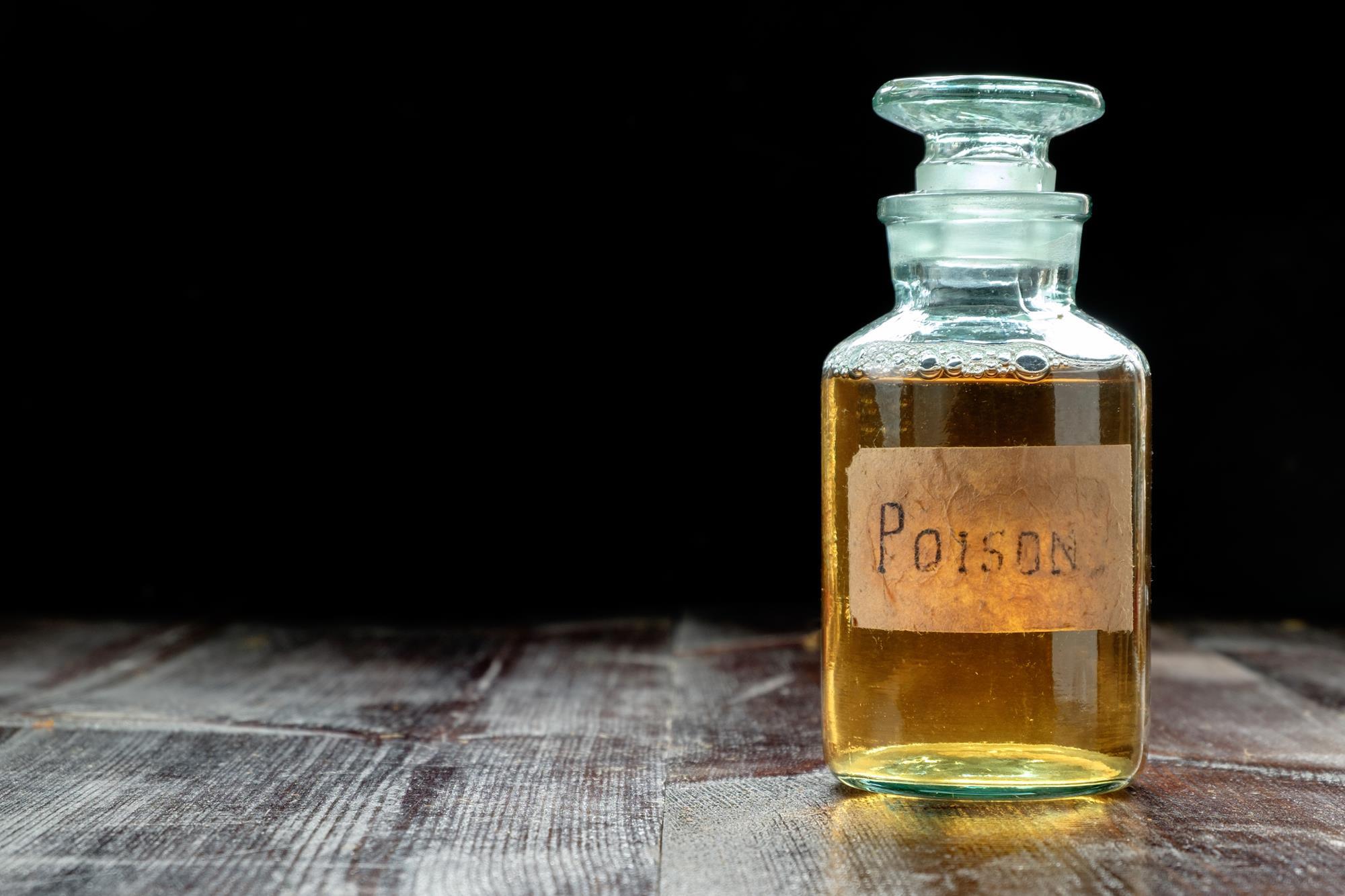Chemical poisoning is a major public health concern. Approximately 95% of all accidental or intentional poisonings are due to chemicals. Nearly 90% of these cases occur at home. The smallest children, infants and toddlers, are at the highest risk for accidental (acute) poisoning. In 2000, poison control centers received well over a million calls about poison exposures to children younger than age 6. Chronic exposure is chemical poisoning that occurs slowly and insidiously over a prolonged period of time. Many chronic, degenerative diseases have been linked to environmental pollution or poisoning. The list may include cancer, memory loss, allergies, multiple chemical sensitivity, chronic fatigue syndrome, infertility in adults, learning and behavioral disorders, developmental abnormalities, and birth defects in children.
Currently there are millions of natural and synthetic chemicals in our world. Approximately 3,000 of them are known to cause significant health problems. Accidental chemical poisoning involving common household or garden products is easy to diagnose and treat, as long as it is recognized early enough. On the other hand, poisoning due to daily exposure to chemicals is more difficult to diagnose and the extent of damage is more difficult to assess. Toxic chemicals can be found everywhere—in homes, in the yard, at work, on the playground—even in foods and drinking water . Some result from illegal dumping. However, many chemical poisoning occur insidiously by the supposedly harmless chemicals that people bring into their homes or office to make their lives more comfortable.
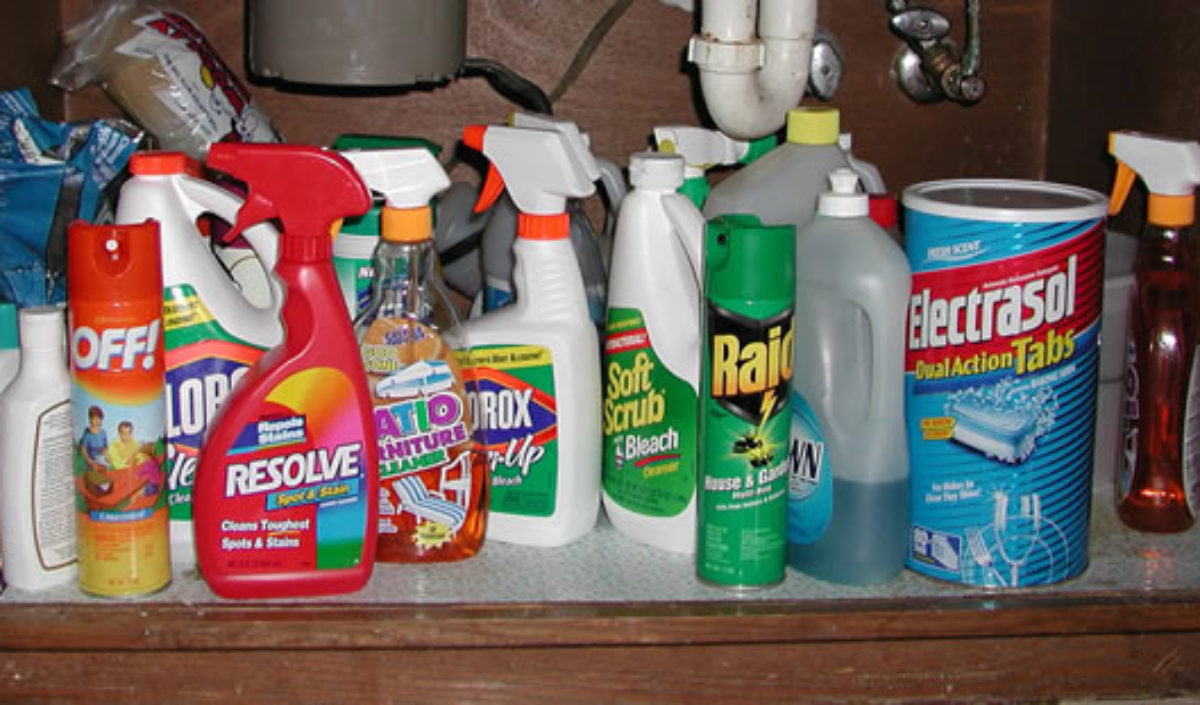
Household poisons
Because of the tremendous amounts of toxic chemicals that can be found inside the house, scientists now believe the home—not the office or the freeway—is the most contaminated place of all. Any chemicals found inside the house can be accidentally ingested by small children. Daily exposure to chemicals indoors may also cause significant health risks. Major chemical poisons inside home include volatile organic compounds, lead, radon, carbon monoxide, and those found in household cleaners and carpet.
VOLATILE CHEMICALS. Indoor air pollution is caused by volatile chemicals. These are chemicals that evaporate at room temperature. When we use products that contain these volatile substances, these chemicals are trapped inside our homes reaching to levels thousands of times higher than the outdoor air. Chronic exposure to polluted air may cause lung infections , headaches, nausea , mental confusion, fatigue, depression , and memory loss. In addition, they may cause damage to an unborn fetus and increase the risk of developing cancer. The following are some of the most common volatile substances found inside our homes:
- trichloroethane (spray cans, insulation, spot removers)
- tetrachloroethylene (dry–cleaning solutions)
- formaldehyde (glue, foam, preservatives, plywood, fabrics, insulation)
- para-dichlorobenzene (P-DCB) (mothballs, air fresheners)
- toluene (solvents, cleaning fluids, wood finishing products)
- benzene (gasoline)
- xylene (paints, finishing products)
- acetone (nail polish removers)
- styrene (foam, carpets, adhesives)
- carbon tetrachloride (dry cleaning solutions, paint removers)
- perchloroethylene (cleaning solvents)
LEAD AND OTHER HEAVY METALS. Lead is a very toxic chemical, especially to small children. It can cause poisoning that leads to learning disabilities and behavioral problems in children. Lead poisoning in pregnant mothers can cause fetal abnormalities, brain damage, and impaired motor skills in babies. Lead is often found in leaded paint (in old houses), pesticides, pottery and china, artist's paint, and products used for hobbies and crafts. Also harmful are other heavy metals, such as mercury and cadmium.
RADON. Radon is an odorless gas produced from the radioactive decay of uranium. It is believed to be the most common cause of lung cancer . In the outdoor environment, radon gas is usually too well-dispersed to accumulate to dangerous levels. It is indoors, without proper ventilation, in places such as basements, where radon can seep from the soil and accumulate to dangerous concentrations. The only way to know if a home is contaminated is through radon testing.
CARBON MONOXIDE. Carbon monoxide (CO) is the most lethal gas produced by a burning heat source. Sources of CO are gas heat, fireplaces, or idling cars in the garage. A CO detector is needed in all homes because this gas is odorless, colorless, and very deadly.
CHEMICALS TRAPPED INSIDE CARPET. Carpet contains many chemicals capable of causing nerve damage. These neurotoxic chemicals include acetone, benzene, toluene, phenol, xylene, decane, and hexane.
HOUSEHOLD CLEANERS. The following are neurotoxic chemicals commonly found in household cleaners:
- chlorine (dishwasher detergents)
- ammonia (antibacterial cleaning agents)
- petroleum (dish soaps, laundry detergents, floor waxes)
MEDICINES. Medicines are one of the most common causes of accidental and intentional (suicide) poisonings. Drugs most commonly involved are aspirins, acetaminophen, sedatives, any psychoactive drug where a patient is more prone to impulsive, suicidal action (e.g., antidepressants), antiseizure drugs, iron pills, vitamins/mineral supplements containing iron, and cardiac drugs, such as digoxin and quinidine.
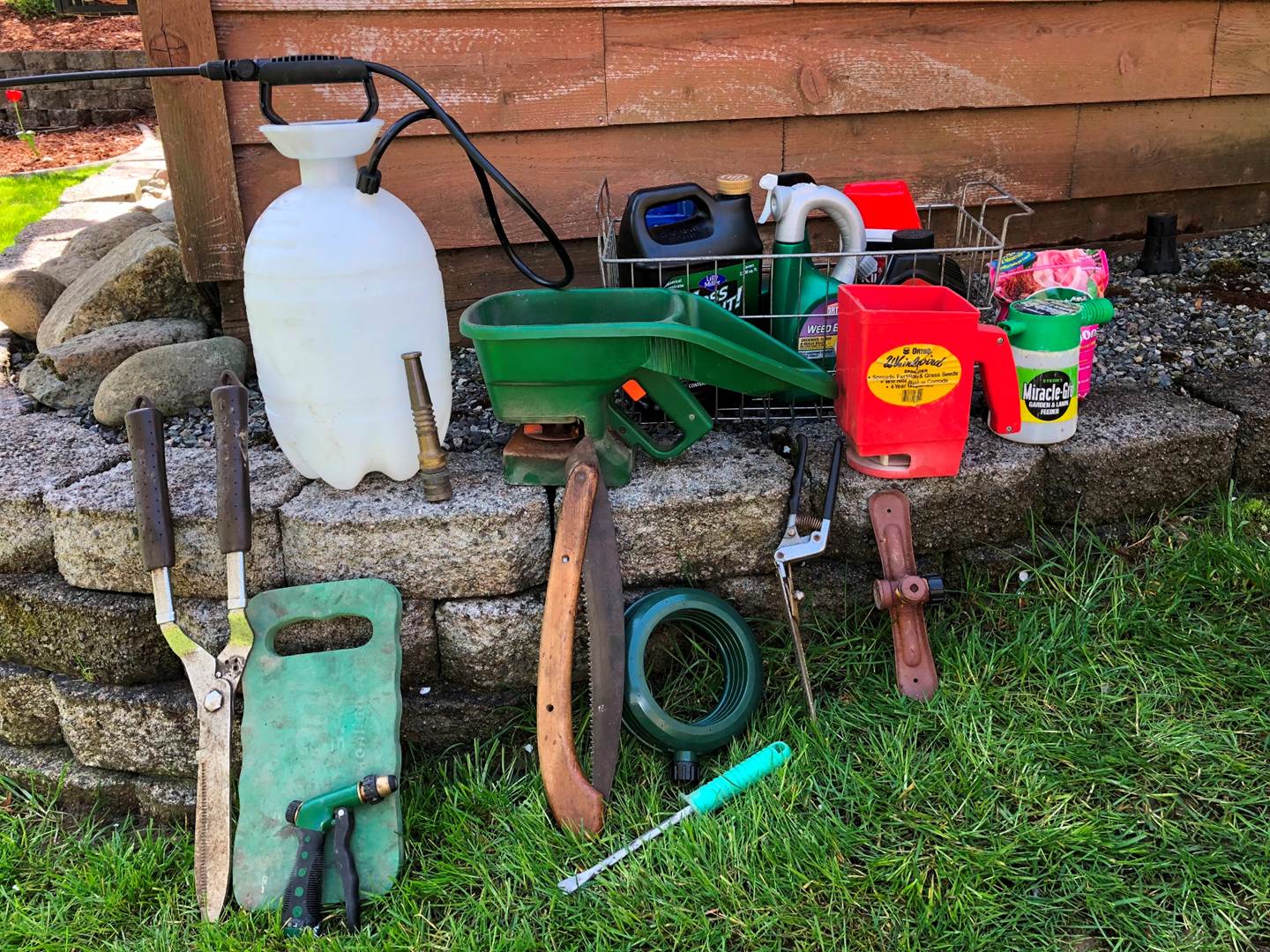
Yard chemicals
Yard materials that can be toxic to humans and pets include:
- Insecticides. Toxic chemicals that can be found in insecticide preparations include chlordane, lindane, toxaphene, arsenic, lead, malathion, diazinon, and nicotine.
- Rodenticides (chemicals that kill mice or rats). Rodenticides often contain very toxic chemicals, such as sodium fluoroacetate, phosphorus , thallium, barium, strychnine, methyl bromide, and cyanides.
- Herbicides (chemicals that kill weed). Herbicides contain carbaryl and diazinon, which increase the risk of childhood brain cancer.
Occupational hazards
Workers are often exposed to toxic effects of various chemicals in their working environment:
- Polluted air. Workers in poorly ventilated plants which manufacture paints, insecticides, fungicides, pesticides.
- Radiation. Workers in poorly constructed nuclear chemical plants.
- Contaminated environment. Miners who labor underground.
- Obnoxious fumes. Fire fighters are most at risk.
- Skin contact with toxic chemicals. Crop pickers being accidentally sprayed with insecticides.
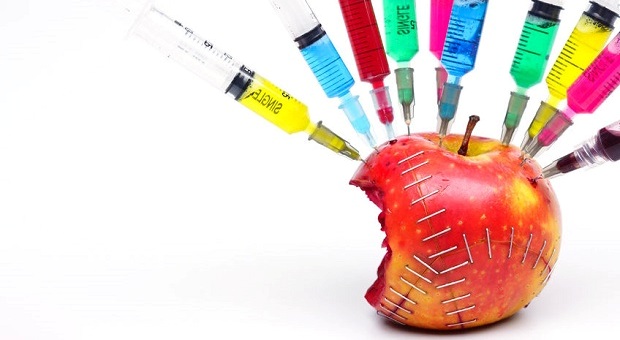
Toxic chemicals in foods
Highly processed or prepackaged foods use various chemical additives to make these foods look more attractive, taste better, or store for longer periods of time. Harmful substances that can be found in foods include:
- Monosodium glutamate (MSG), a common flavoring agent. Excessive consumption of MSG may cause hyperactivity, memory loss, or other types of brain damage. It is often associated with the so-called "Chinese restaurant syndrome" characterized by headaches, nausea, vomiting , palpitations, and flushing of skin, due to the MSG content in the food.
- Artificial sweeteners, such as aspartame or saccharin. These sweeteners can cause a variety of health problems, including headaches (migraines included), dizziness , seizures, depression, nausea, and vomiting, and abdominal cramps. Their use may be associated with hyperactivity in children. Whether or not they may increase risk of cancer is unknown at this time. Pregnant women should definitely avoid using these sweeteners.
- Artificial colors. Color additives can be found in a variety of foods including cereals, juices, candy, frozen foods, ice cream, cookies, pizza, salad dressings and soft drinks. Children and adults alike may be exposed to cancer-causing artificial colors such as Red numbers 8, 9, 19, and 37, or Orange number 17.
- Preservatives. Many of the preservatives found in foods are very hazardous. Nitrates, a common preservatives in cured and luncheon meats and canned products, are known to cause cancer. In addition, a pregnant woman who consumes large amounts of nitrates (for example, through eating hot dogs or salami) unknowingly increases risk of brain damage in her unborn child. Synthetic antioxidants are used in prepackaged foods to prevent food spoilage. Common synthetic antioxidants, such as butylated hydroxyanisole (BHA) and butylated hydroxytoluene (BHT), can be found in cereals, baking mixes, or instant potatoes. These products are known to cause brain, liver, and kidney damage, as well as respiratory problems.
- Food contaminants. Fruits and vegetables are definitely healthy foods. However, they may contain dangerous herbicide and pesticide residues on the surface. Fish in contaminated lakes or rivers may contain mercury, dioxin, PCBs, or other polluted chemicals. Babies of mothers who ate contaminated fish during pregnancy have lower birth weight, smaller heads, developmental delays, and lower scores on tests of baby intelligence.
Air pollution and environmental contamination
Air pollution can cause or worsen lung or heart diseases and increase risk of cancer. Chemicals most often cause pollution in the air and water supply include asbestos, carbon monoxide, hydrogen sulfide, lead, nitrogen oxides, halogenated hydrocarbons, and pesticides. In 2002, researchers reported a link between carbon monoxide in air pollution in Los Angeles and increased risk of heart defects in pregnant women's developing children. Women exposed to high levels of air pollution, especially that caused by vehicles, during the second month of pregnancy were more likely to have children with heart-related birth defects.
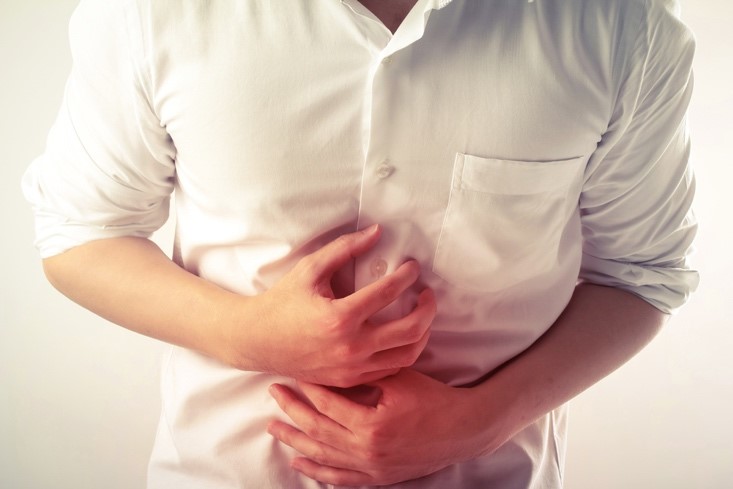
Causes & symptoms
Acute poisoning
The following are possible causes for acute poisoning:
- Accidental ingestion of household products. This affects mostly children under five.
- Medication errors or mix-ups. This happens most often to elderly people. Sometimes it is hospital staff that makes the error; at other times, it is the patient who gets confused about the identity or dosage of the drugs.
- Suicide.
- Excessive alcohol or drug abuse.
The following are signs and symptoms of acute chemical poisoning:
- difficulty breathing
- changes in skin color
- headaches or blurred vision
- irritated eyes, skin or throat
- sweating
- dizziness
- breath odor: bitter almond (cyanide poisoning), garlic odor (arsenic poisoning)
- nausea, vomiting, diarrhea
- unusual behavior
- difficulty walking or standing straight
Chronic poisoning
COMMON ROUTES OF EXPOSURE TO TOXIC CHEMICALS. A person may accumulate toxic amounts of a chemical in his or her body through daily exposure to the chemicals. Common routes of exposure include:
- inhalation of the poisonous gas
- consumption of contaminated food, water, or medications
- contact with toxic or caustic chemicals in the eyes, skin, or through contaminated clothing.
- pregnant mother's exposure to toxic chemicals during pregnancy, especially during the first trimester
EFFECTS OF TOXIC CHEMICALS ON DEVELOPING FETUSES AND CHILDREN. Toxic chemicals can have devastating effects on the developing fetuses and young children. The following diseases and conditions are linked to chronic exposure to home and environmental pollution:
- miscarriages and spontaneous abortions
- low birth weight
- premature births
- stillbirths
- birth defects
- sudden infant death syndrome (SIDS)
- developmental delays
- poor motor coordination
- attention-deficit hyperactivity disorder (ADHD)
- aggressive behavior
- learning disabilities
- speech and language problems
- autism
- sensory deficits
- allergies and chemical sensitivity in childhood and in later years
- asthma, hay fever , and sinusitis
- cancer in childhood, adulthood, and in subsequent generations
- poorly functioning organs and systems
- weakened immune system and increased risk of infections
The following chronic diseases and conditions may occur in adults as a result of cumulative chemical poisoning:
- fatigue
- headaches
- skin rashes
- aches and pains
- generalized weakness
- asthma
- increased risk of infections
- depression and irritability
- liver diseases, such as jaundice (yellowing of the skins and eyes), inflammation of the liver (hepatitis ), and cirrhosis (a chronic degenerative disease of the liver)
- lung diseases
- heart diseases
- cancer
- decreased life expectancy
- sick building syndrome
- Gulf War syndrome
Diagnosis
Acute poisoning
In many cases, the identity of the poison is known to the patient or the parents of the affected child. The role of the physician is to determine what treatment (if any) is necessary based on the amount of toxic substance ingested, the identity of the chemical and patient's signs and symptoms.
Chronic poisoning
Chronic environmental poisoning is more difficult to diagnose. To find out if environmental pollution is causing a person sick, a physician will conduct a thorough physical exam of the patient. He or she also obtains a thorough medical history with detailed information concerning the food and water sources, as well as the nature of the person's work, or the place where he or she lives. Lab tests may include blood and urine tests and hair sample analysis. In addition, liver and kidney function tests are also conducted to see if these organs are affected. The doctor also inquires about other diseases the patient may have developed recently.
Treatment
Alternative treatments are not appropriate for acute chemical poisoning. When an emergency poisoning occurs, especially in children, parents are encouraged to call a new toll-free hotline that is staffed 24 hours a day at 1-800-222-1222. However, they may be useful in treating chronic exposure to toxic chemicals. Specific treatment plan depends on the type of poison by which a person is affected. Generally speaking, most treatments involve identifying the offending chemical and avoiding future exposures to the offending agent. A healthy diet, nutritional supplements and/or detoxification therapy are also helpful. Detoxification therapy is especially effective for the liver, which is the organ that metabolizes most toxins.
Detoxification diet
Naturopaths sometimes recommend patients suspected of chronic chemical poisoning to follow a "detoxification diet" for at least several months. Pregnant women, small children, or very frail people should avoid taking this diet. A detox diet has the following characteristics:
- Low fat intake to increase fat mobilization (moving fat from storage to be used for energy). Limited consumption of olive oil and vegetable oils is allowed.
- Limited intake of sugar and highly processed foods, and avoidance of alcohol, caffeine , and tobacco.
- High fiber consumption to absorb the toxic chemicals and eliminate them from the body.
- Limited consumption of red meat. The bulk of protein intake should come from vegetable sources, such as legumes and tofu, as well as fish from unpolluted waters.
- Strong emphasis on organic fruits and vegetables (and their juices) with detoxification effects. They include papayas, apples, pears, strawberries, dark green leafy vegetables, carrots, beets, and garlic. Antioxidant foods, such as broccoli, cauliflower, kale, yams, tomatoes, peaches, watermelon, hot peppers, green tea , red grapes, citrus fruits, soybeans, and whole grains are also recommended.
- Increased water intake to at least eight glasses of water per day to help eliminate waste from the body.
- Dietary supplementation with high potency multivitamin/mineral products.
Exercise
Exercise to the point of perspiration helps eliminate toxins from the body. Daily walking for 30 minutes is helpful and appropriate for most people.
Herbal therapy
Milk thistle (Silybum mariannum ) is a powerful antioxidant that protects the liver and assists in the detoxification process by increasing glutathione supply in the liver. Glutathione is the enzyme primarily involved in the detoxification of many toxic chemicals in the environment, such as solvents, pesticides, and heavy metals.
Traditional Chinese medicine
Depending on a patient's specific condition, an expert Chinese herbalist may prescribe herbal remedies that can help remove toxins from the body and improve liver function.
Homeopathy
For homeopathic therapy, patients should consult a homeopathic physician who will prescribe specific remedies based on knowledge of the underlying cause.
Fasting
Fasting is one of the most ancient ways of detoxification and is also very efficient. During three-day fasting, patients should take supplements and drink four glasses of juice a day to assist the cleansing process and to prevent exhaustion. Supplements recommended are those that include antioxidants, such as vitamins C and E, selenium, zinc , and magnesium . For patients suspected of significant poisoning, a naturopath may also prescribe milk thistle to aid the detoxification process and provide support for the body. The patient may also consider consuming a food fast, where only food that is simple to digest is consumed. For example, "ultraclear" hydrolyzed rice is simple to digest and is also hypo-allergenic.
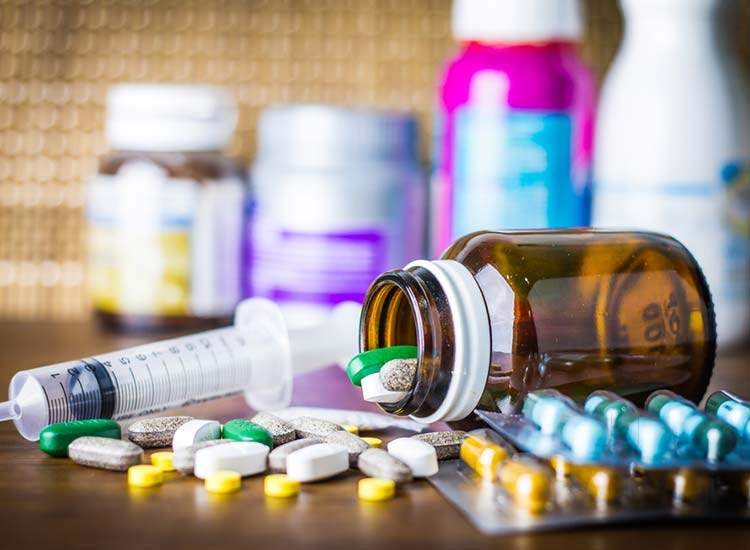
Allopathic treatment
Acute poisoning
For acute poisoning, patient or parents of an affected child should call 911, a local poison control center, or 1-800-222-1222 immediately. The toll-free number is a national hotline launched nationwide in 2002 by the American Association of Poison Control Centers to provide 24-hour poison treatment and prevention services. If a child is suspected of eating or drinking hazardous chemicals, parents should look for the container and call for instructions. Patients or parents of the poisoned child should wait for instructions before administering syrup of ipecac, activated charcoal , or anything else by mouth. Treatment of a particular poison depends on the identity of the poison and how the poison was absorbed into the body.
INHALED POISONS. Treatment of inhaled poison includes bringing the patient out and away from the area contaminated with poisonous gas. The patient should be given oxygen and other respiratory support as necessary.
SKIN AND EYE CONTAMINATION. If a person's skin comes into contact with toxic chemicals, the contaminated clothing should be removed, the chemical carefully brushed off the skin, and the body flushed with running water to dilute the poison. The wounds , if any, should be covered with sterile gauze or cloth and the patient be transferred to the hospital for treatment of chemical burn. If toxic or caustic chemicals get in the eyes, the affected person should remove glasses or any contact lenses from the eyes immediately, rinse the eyes well with clean water or normal saline solution, and go to the emergency room for further treatment or observation.
INGESTED POISONS. Depending on the specific type of ingested poisons, syrup of ipecac, activated charcoal, and/or gastric lavage can be used.
For most cases of accidental poisoning, the drug parents and doctors can rely on is syrup of ipecac. When swallowed, it irritates the stomach and induces vomiting. Syrup of ipecac is now considered the safest drug to treat poisoning and is often the most effective. Syrup of ipecac can be used for most ingested poisons. However, syrup of ipecac should not be used if the suspected poison is strychnine, a corrosive substance (strong acids or lye), petroleum products (gasoline, kerosene, paint thinner, or cleaning fluids), or certain prescription drugs, such as antidepressants or sustained-release theophylline. In addition, it should not be used in patients who are unconscious or seizing.
Activated charcoal is also an effective treatment for many chemical poisons. It can absorb poisons quickly and in large amounts. In addition, it is nontoxic, may be stored for a long time, and can be conveniently administered at home. Charcoal works by binding to irritating or toxic substances in the stomach and intestines. This prevents the toxic drug or chemical from spreading throughout the body. The toxic drug or chemical and the activated charcoal will be excreted in the stools without harming the body.
If both syrup of ipecac and charcoal are recommended for treatment of the poison, ipecac should be given first. Charcoal should not be given for at least 30 minutes after ipecac or until vomiting from ipecac stops. Activated charcoal is often mixed with a liquid before being swallowed or put into the tube leading to the stomach. Activated charcoal is available as 30-g liquid bottles. It is also available in 15-g container sizes, and as slurry of charcoal premixed in water, or as a container in which water or soda pop is added.
Charcoal should not be used to treat poisoning caused by corrosive products, such as lye or other strong acids, or petroleum products, such as gasoline, kerosene, or cleaning fluids. Charcoal may make the condition worse and delay the diagnosis and treatment. In addition, charcoal is also not effective if the poison is lithium, cyanide, iron, ethanol, or methanol.
Gastric lavage may also be used to treat chemical poisoning. This procedure is done by medical professionals in emergency rooms only. Lavage fluids (saline water or water) is given through a large tube down the patient's throat and the stomach contents are pumped out. This procedure is repeated many times until the physician is confident that most of the toxic substance is removed. Then a specific antidote for the chemical or activated charcoal can be given to absorb the rest.
Sometimes, antidotes are available to neutralize poison and render it harmless. The following are some of the common antidotes:
- naloxone: for morphine, methadone, or heroine overdose
- atropine: for organophosphate (insecticide) poisoning
- acetylcysteine: for acetaminophen (Tylenol) toxicity
- digoxin immune fab (Digibind): for digoxin toxicity
Chronic chemical poisoning
Treatment of chronic chemical poisoning involves identifying, eliminating the source of poison from the patient's environment, and symptomatic treatment of the condition. Chelation therapy can be used to remove heavy metals, such as lead, iron, mercury, copper , nickel, zinc, cadmium, beryllium, and arsenic. This treatment uses chelating agents, such as ethylenediamine tetraacetic acid (EDTA) and dimethylsuccinate (DMSA) to bind and precipitate metals and remove them from the body.
Expected results
Depending on the severity of the poisoning, the affected person may have total or partial recovery. If the rescue effort comes too late, a patient may die of acute chemical or drug poisoning. For those affected by chronic exposure to environmental poisoning, recovery depends on the severity of the poisoning, the ability to stay away from the offending agent, and appropriate diagnosis and treatment. Total recovery can occur in many patients.
Prevention
- Avoiding eating contaminated fish, especially that which comes from known contaminated areas or a lot of big fish, such as shark, swordfish, or tuna, which tend to contain higher amounts of mercury than smaller fish. Pregnant women should not consume more than 7 oz of tuna per week. Mercury can cause brain damage in the developing fetus.
- Not painting or remodeling a home while pregnant or when the children are still small. Paint contains lead and cadmium that can harm developing fetus and cause learning disabilities in small children.
- Limiting use of chemicals inside the house as much as possible and instead using natural alternatives, such as baking soda (as cleaner, deodorizer), distilled white vinegar (as cleaner), essential oils (as fragrances), lemon juice (as cleaner), and liquid soaps (as detergents).
- Increasing ventilation inside the house.
- Considering installing tile or wood floors in new homes instead of new carpet.
- Having the house tested for radon.
- Eating organic foods. Otherwise, to better remove toxins, washing fruits and vegetables carefully before eating with a mild acid solution, such as diluted vinegar.
- Avoiding toxic chemical exposure as much as possible if pregnant.
- Keeping all medications, petroleum products, cleaning products locked and away from small children. Installing child-proof locks or gates to prevent children from finding poisons.
- Avoiding mixing up household cleaning products. Nontoxic chemicals when mixed together can release toxic gases or cause explosion.
- Keeping all chemicals in original containers, properly identified and stored away from foods.
- Only using chemicals in well–ventilated areas to avoid breathing in fumes. Using adequate skin, eye, and respiratory protection.
- Never putting household chemicals in food or beverage containers.
- Avoiding smoking or lighting a candle near household chemicals, such as cleaning solutions, hair spray, paints, or paint thinner or pesticides.
- Disposing all hazardous chemicals properly according to the manufacturer's instructions.

